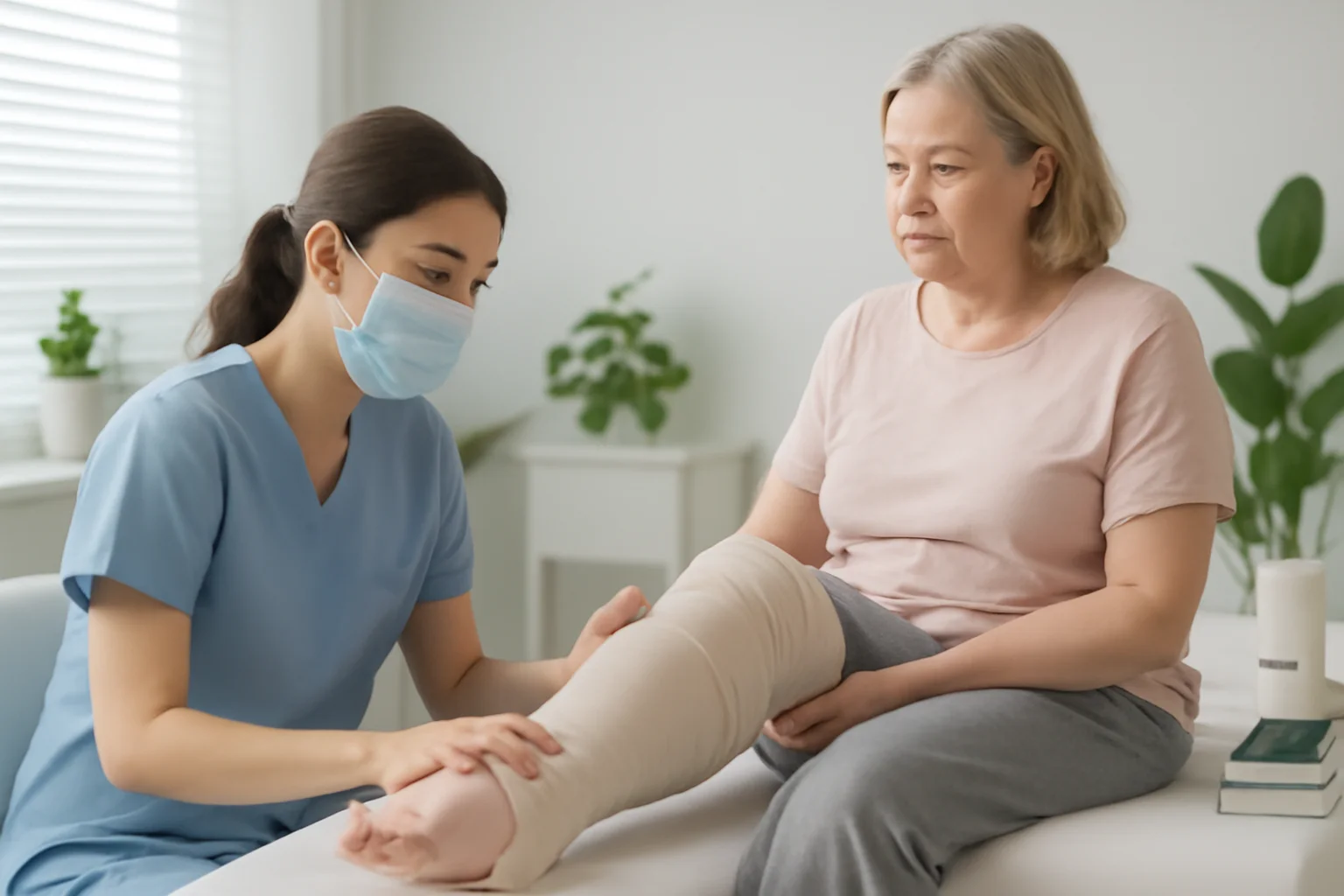
Management and Prevention of Lymphedema with Effective Methods
The lymphatic edema is a condition that arises from the dysfunction of the lymphatic system. The role of the lymphatic system is to return fluid from the tissues to the bloodstream and to support the body’s immune response. When this system does not function properly, lymph fluid accumulates in the tissues, causing swelling. Lymphatic edema most commonly occurs in the limbs, such as the arms and legs, but it can also affect other body parts.
Lymphatic edema is particularly common among patients suffering from cancer, where the removal of lymph nodes or damage to the lymphatic system occurs during radiation therapy. However, it can develop not only in cancer patients but also due to other reasons such as genetic predisposition, infections, or chronic venous insufficiency. Lymphatic edema is not just an aesthetic problem; it can also cause several complications, such as skin inflammation or pain. Proper treatment and prevention are key to managing lymphatic edema, so it’s worthwhile to thoroughly inform oneself about the options and symptoms.
The Causes of Lymphatic Edema
There can be several causes for the development of lymphatic edema, among which the most common are disorders of the lymphatic system. These disorders can arise from various reasons, such as surgeries involving the removal of lymph nodes, radiation treatments, or injuries to the lymphatic vessels.
In the treatment of cancer, it is often necessary to remove lymph nodes, which disrupts the normal functioning of the lymphatic system. Additionally, the growth of tumors can exert pressure on the lymphatic vessels, which also hinders the flow of lymph fluid. The risk of lymphatic edema may also be increased by radiation therapy, as this treatment can cause inflammation around the lymph nodes and lymphatic vessels, contributing to the accumulation of lymph fluid.
Genetic predisposition can also play a role in the development of lymphatic edema. Some individuals may have a hereditary tendency to lymphatic system abnormalities, which increases the risk of lymphatic edema. Additionally, other health issues, such as chronic venous insufficiency, can also contribute to the accumulation of lymph fluid.
Infections, particularly skin infections, can also cause lymphatic edema. In such cases, inflammation disrupts the functioning of the lymphatic vessels, leading to swelling. To maintain the health of the lymphatic system, it is important to pay attention to the condition of the skin and to prevent infections.
The Symptoms of Lymphatic Edema
The most characteristic symptom of lymphatic edema is swelling, which generally develops gradually. Initially, the swelling may only occur in part of the limbs, but over time, it can extend to the entire limb or even to other parts of the body. The swollen areas are usually softer to the touch, and skin tension may also be observed.
Other symptoms of lymphatic edema include pain and a feeling of heaviness in the swollen limbs. Patients often feel that their arm or leg is heavier, which can limit them in their daily activities. The pain can vary in intensity and may increase proportionally with the degree of swelling.
The condition of the skin can also change as a result of lymphatic edema. The skin in the swollen areas is usually smooth and tight, but over time, it may thicken, and fatty tissue can accumulate between the tissues. Additionally, the skin may be easily injured, and wound healing may be slower. In more severe cases of lymphatic edema, skin infections such as cellulitis can develop, leading to further complications.
It is important to emphasize that the symptoms of lymphatic edema develop gradually and are not always easily noticeable. Therefore, it is crucial that if someone suspects they are showing signs of lymphatic edema, such as swelling or pain in their limbs, they should not hesitate to consult a doctor for proper diagnosis and treatment.
Treatment Options for Lymphatic Edema
The treatment of lymphatic edema is a complex process that depends on the causes and severity of the condition. The goal of appropriate treatment is to reduce swelling, improve the flow of lymph fluid, and prevent complications.
One of the most common treatment methods is manual lymphatic drainage, performed by trained therapists. This technique promotes the flow of lymph fluid by activating the lymphatic vessels, which reduces swelling. During the treatment, the therapist uses specific massage movements that stimulate the functioning of the lymphatic system.
Compression therapy is also an important part of the treatment of lymphatic edema. This method involves the use of compression stockings, bandages, or compression wraps of varying degrees, targeting the swollen areas. Compression helps in the return of lymph fluid and prevents further swelling.
Lifestyle changes are also essential in the treatment of lymphatic edema. Regular exercise, proper nutrition, and adequate hydration can all contribute to maintaining the health of the lymphatic system. It is important for patients to pay attention to their weight, as being overweight can increase the risk of developing lymphatic edema.
In addition to treatment options, the prevention of lymphatic edema plays a significant role. Proper skin care, infection prevention, and movement can all contribute to the health of the lymphatic system.
This article does not constitute medical advice. In case of health problems, everyone should only heed their doctor’s advice.

